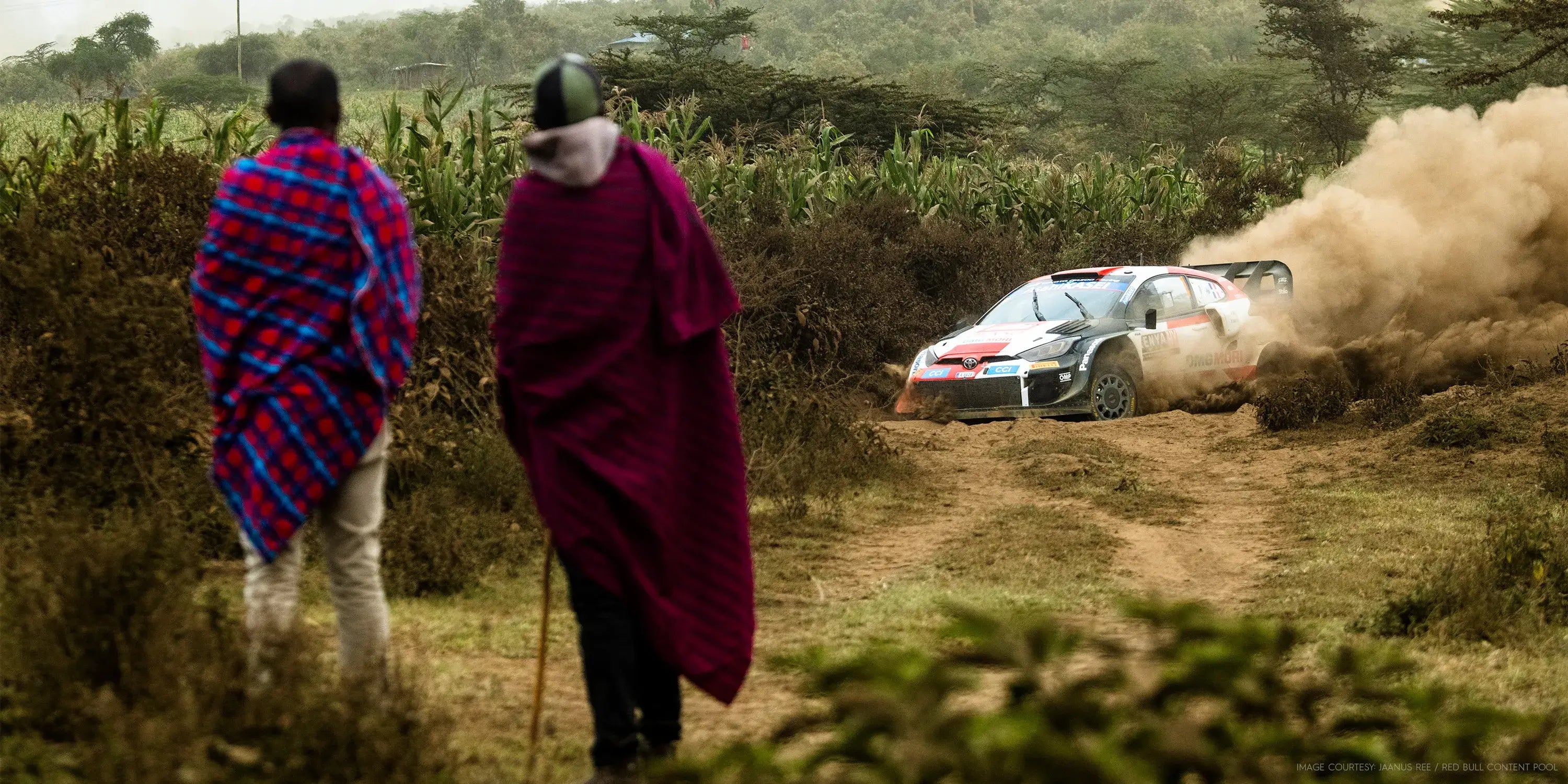In early June Queen Elizabeth II celebrated her platinum jubilee as the first British monarch to do so; at the end of the same month the 69th Safari Rally started and ended in Nairobi, the Kenyan capital. On the surface, the 70th anniversary of the Queen’s coronation in London and arguably the most gruelling rally on the African continent have little or nothing in common, yet, as the record shows, they are inextricably linked.
Indeed, the rally was first staged in June 1953 under the ‘East African Coronation Safari’ banner as a 5000km road adventure across Kenya, Uganda and Tanganyika (now Tanzania) as part of the three then-British colonies’ celebrations of the coronation. East Africa held a special significance for the queen: she was in Kenya when she learned of the death of her father, King George VI, and thus her accession to the throne.
When the winds of independence swept across Africa during the early sixties the name of the rally, which had by then morphed into a gruelling marathon, was changed to East African Safari Rally; then, in 1974, to Safari Rally. Had Covid not caused cancellation of the 2020 event this year’s rally would have marked the 70th running of the Safari, thus chiming perfectly with Queen Elizabeth’s celebrations.
 Rauno Aaltonen and Lofty Drews in a Datsun 160J cross a railway line at fast speed at the Safari Rally in 1980. Image courtesy Motorsport Images.
Rauno Aaltonen and Lofty Drews in a Datsun 160J cross a railway line at fast speed at the Safari Rally in 1980. Image courtesy Motorsport Images.
Conscious of the costs of competing in those early cross-country events, founder-organiser Eric Cecil requested permission for entrants to display commercial sponsorship - banned by the FIA in all its motorsport categories until 1968. Although declined by the authorities, but he unilaterally approved on-car advertising for the rally; thus, the Safari can claim to have pioneered motorsport sponsorship!
So arduous were those early events and so unpredictable their conditions that the legend grew that no foreigner could win the rally outright, with locals driving cars as diverse as VW Beetles, Ford Cortinas and Mercedes 220SEs taking home the big silverware. Manufacturers increasingly threw eye-watering budgets at winning ‘The Toughest Rally in the World”, but always included local crews in their line-ups as back-up.
Then, in 1972 ‘The Flying Finn’ Hannu Mikkola shattered this myth by winning in a (heavily reinforced) Ford Escort, but only after preparations included numerous reconnaissance runs over the entire route and back-up support at virtually every turn! The genie was out of the bottle, but at enormous cost: soon spotter and service helicopters were de rigeur in the skies above the African savannah special stages.
 Vic Preston Jr in a Ford Escort at the Sarfari Rally in 1972. Image courtesy Motorsport Images.
Vic Preston Jr in a Ford Escort at the Sarfari Rally in 1972. Image courtesy Motorsport Images.
The Safari Rally became an outlier after other World Rally Championship rounds trimmed their formats to three days and special stage lengths to around 20km - prompting the term ‘office hours rallying’. Safari Rally organisers, though, persisted with full five-day marathons and 100km stages, with service halts few (and far-between). Indeed, crews were more usually forced to repair their own cars.
After Mikkola’s win the pendulum swung back in favour of local crews, with Sheka Mehta, co-driven by wife Yvonne, taking victory the following year for Datsun. Thereafter honours see-sawed between locals and internationals until Ian Duncan’s 1994 win for Toyota, the last for a local.
Following some organisational glitches and economic issues the Safari lost its place on the WRC rota after 2002; ironically no local crews finished the event that year…
That seemed the end of the road for the iconic event’s championship status: Safaris were staged annually, but on an open adventure basis and for classic rally enthusiasts with delectable historic machinery. All agreed that a WRC calendar was incomplete without a leg in Africa and hence a long, hard slog back began to return the Safari Rally to world championship status. Covid, though, scuppered a planned 2020 return.
 Toyota Gazoo Racing Driver's Sebastien Ogier and Benjamin Veillas performing during the WRC in Kenya 2022. Image courtesy Red Bull Content Pool.
Toyota Gazoo Racing Driver's Sebastien Ogier and Benjamin Veillas performing during the WRC in Kenya 2022. Image courtesy Red Bull Content Pool.
Last year’s return to the WRC proved an epic adventure: trimmed to meet modern standards and regulations, a number of ‘old’ sections were retained; thus, stages - 19 in total - had evocative names such as Kedong and Soysambu, the latter a 30km test featuring river crossings with steep fords, long straights, hard lava sections and plenty of twisty bits. The route included passes through a nature conservancy populated by lion…
Twenty-seven entries were received for this year’s Safari, of which 12 were in the top Rally1 class - spread as follows: Ford (5), Toyota (4) and Hyundai (3) - and the balance in the Rally and Rally 3 categories. Entrants hailed from across the globe, with one intrepid crew flying in from the USA, and local crews - rather encouragingly - making up one-third of the entry list.
The contest proved a walk-over for Toyota, it’s four Yaris GRs crossing the finishing ramp in formation – led by 21-year-old Finish sensation Kalle Rovanpera, son of former WRC driver Harri - after the Ford and Hyundai entries suffered troubled and turbulent rallies.
“It was the hardest rally I’ve ever done,” said the winner at the finish. Clearly, then, ‘The Toughest Rally in the World’ has lost none of its challenges even some of the more adventurous sections have been lost to time. Above all, it proved deserving of its place on the WRC calendar during a jubilee year.














































